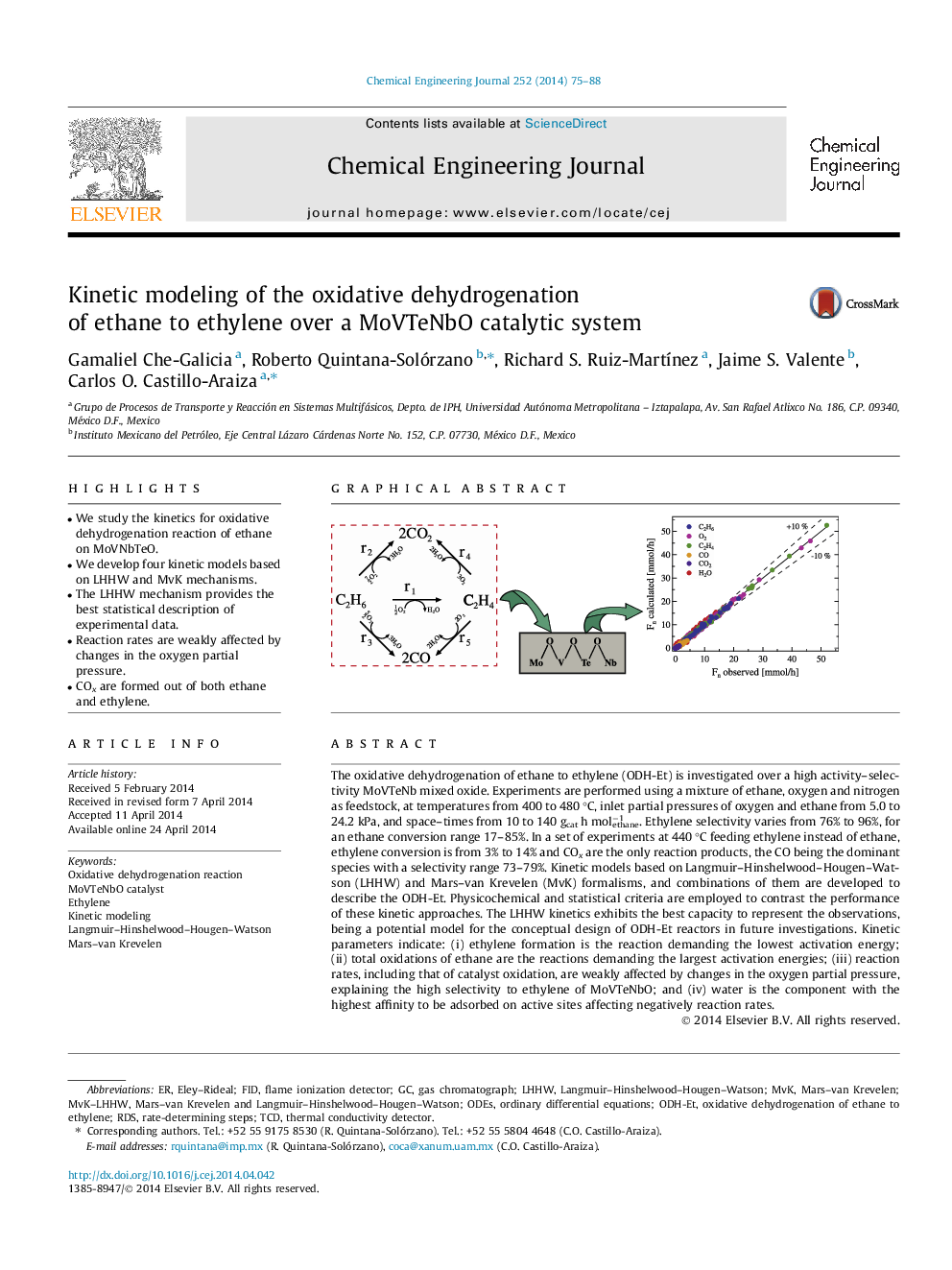| Article ID | Journal | Published Year | Pages | File Type |
|---|---|---|---|---|
| 147155 | Chemical Engineering Journal | 2014 | 14 Pages |
•We study the kinetics for oxidative dehydrogenation reaction of ethane on MoVNbTeO.•We develop four kinetic models based on LHHW and MvK mechanisms.•The LHHW mechanism provides the best statistical description of experimental data.•Reaction rates are weakly affected by changes in the oxygen partial pressure.•COx are formed out of both ethane and ethylene.
The oxidative dehydrogenation of ethane to ethylene (ODH-Et) is investigated over a high activity–selectivity MoVTeNb mixed oxide. Experiments are performed using a mixture of ethane, oxygen and nitrogen as feedstock, at temperatures from 400 to 480 °C, inlet partial pressures of oxygen and ethane from 5.0 to 24.2 kPa, and space–times from 10 to 140 gcat h molethane−1. Ethylene selectivity varies from 76% to 96%, for an ethane conversion range 17–85%. In a set of experiments at 440 °C feeding ethylene instead of ethane, ethylene conversion is from 3% to 14% and COx are the only reaction products, the CO being the dominant species with a selectivity range 73–79%. Kinetic models based on Langmuir–Hinshelwood–Hougen–Watson (LHHW) and Mars–van Krevelen (MvK) formalisms, and combinations of them are developed to describe the ODH-Et. Physicochemical and statistical criteria are employed to contrast the performance of these kinetic approaches. The LHHW kinetics exhibits the best capacity to represent the observations, being a potential model for the conceptual design of ODH-Et reactors in future investigations. Kinetic parameters indicate: (i) ethylene formation is the reaction demanding the lowest activation energy; (ii) total oxidations of ethane are the reactions demanding the largest activation energies; (iii) reaction rates, including that of catalyst oxidation, are weakly affected by changes in the oxygen partial pressure, explaining the high selectivity to ethylene of MoVTeNbO; and (iv) water is the component with the highest affinity to be adsorbed on active sites affecting negatively reaction rates.
Graphical abstractFigure optionsDownload full-size imageDownload as PowerPoint slide
